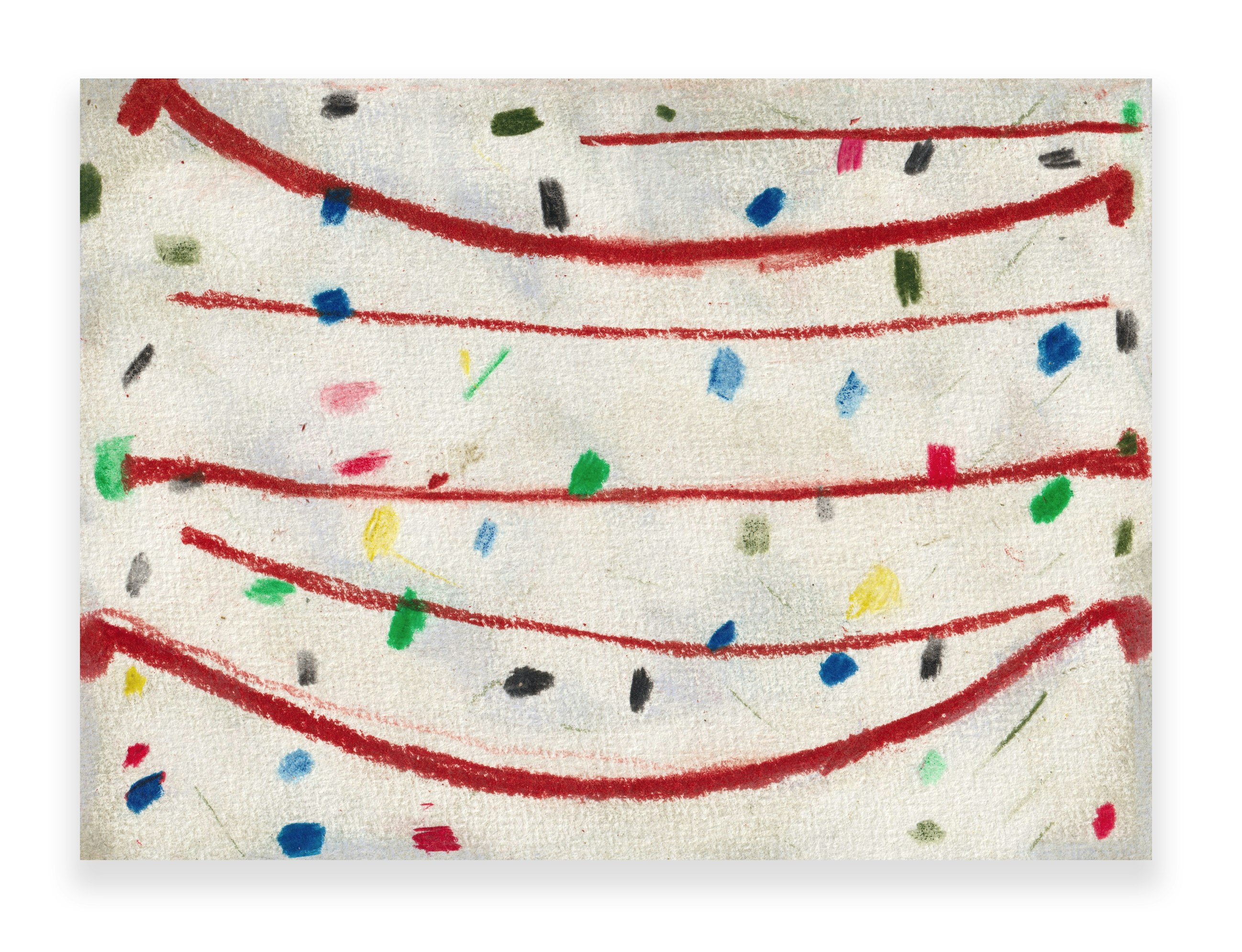
Untitled drawing, 2023, colour pencil and soft pastel on paper, 11 x 15 cm
I’m looking at an untitled drawing by Patrick Michael Fitzgerald. It’s a breezy day and the street is traversed by red skipping ropes. Variously coloured scraps fly about like the blown papers in a Hokusai. Tiny marks rotate, captured and captivating all areas of the surface at once. A string of lights, a shower of confetti, celebrating the good fortune of being alive.
When I turn the drawing over, I see the words, “Under a crafty sky”. The phrase is from The Straightening by Paul Celan. Patrick includes this information, along with his own name and the year, 2022. The back of the paper is scruffy with incidental marks picked up from his drawing table. I can see how the red lines, the skipping ropes, are strongly pressed into the page. Flipping backwards and forwards between the front and the back of the drawing, the lines begin to look like a mouth, a lipstick smile. I dislike this association and try to suppress it.
Leafing through my paperback edition of Celan’s poems, there’s no sign of The Straightening. In the Table of Contents, I’m reminded of other titles, and think of Shoshana Olidort’s remark that Celan’s poems, emerging from lived experience, are “born dark”. Finding the missing poem online and reading, “Gales, whirl of particles”, I’m struck by how this image chimes with my impression of Patrick’s drawing. On second thoughts, perhaps not so much, ‘whirl of particles’ sounds right, but a gale and a breeze have different connotations. They are not the same.
The reverse side of a work on paper – the verso – is usually the preserve of specialists, of framers and archivists, and maybe a conservator, if it comes to that. As well as the back of a loose sheet, verso refers to the left-hand page of an open book. Left, in Italian, ‘sinistra’, from the Latin for sinister. The left is not right. Not smiled upon. I’ve seen the verso and I can’t unsee it. Coming back to the front – the side we can all see – the marks appear heavier now, more static. I’m aware of how each one has been laid down on the small sheet, not randomly scattered, but carefully and deliberately placed. The texture of the paper is plainly visible, more so for the rubbing of soft pastel over the white surface. There’s a lot of grey between the red lines, a grubby wind.
Though I can’t resist airy metaphors, the drawing also looks like sheet music, notes along a staff. This idea comes from my wife, who, seeing the drawing framed and hung close to the record player, decided this. As well as weight – their gravitas – Celan’s poems are noted for their musical shape and sound. The title of his most famous poem includes the word ‘fugue’, and it is structured accordingly, its successive parts repeated to devastating effect.
Patrick has spoken about grouping similar works together, like families. I like this idea, the suggestion of affinity, though of course families are more complicated than that. The mountain in the Hokusai print, its unassuming outline in the background of the drama, presides over a changing world closer to our vision. Everything changes but nothing is lost, a drawing is still a drawing, and a poem is still a poem.
© John Graham, 11 August, 2023.